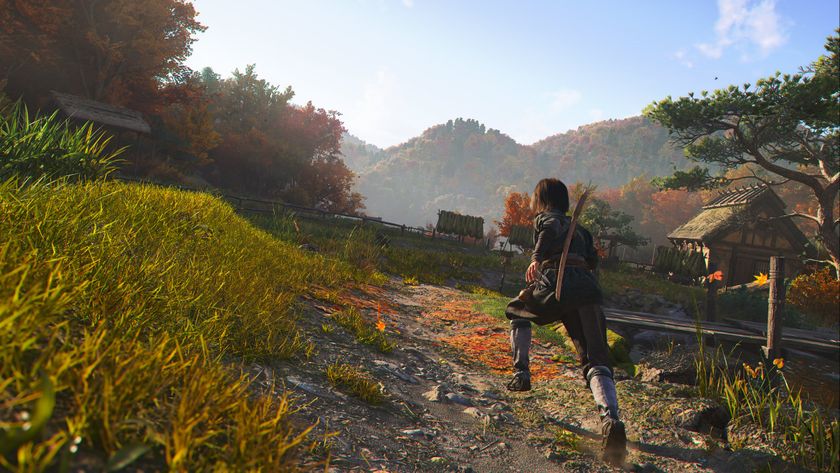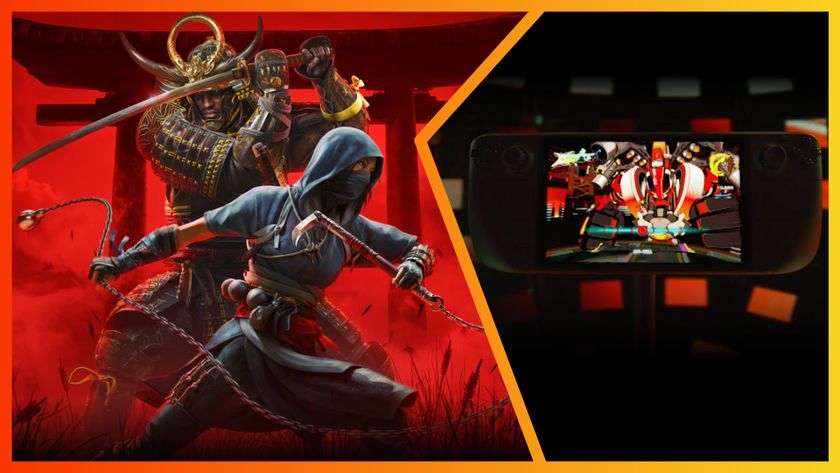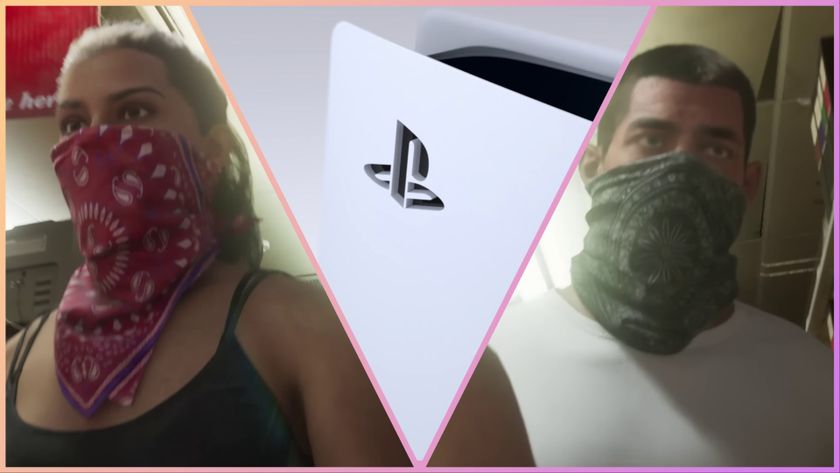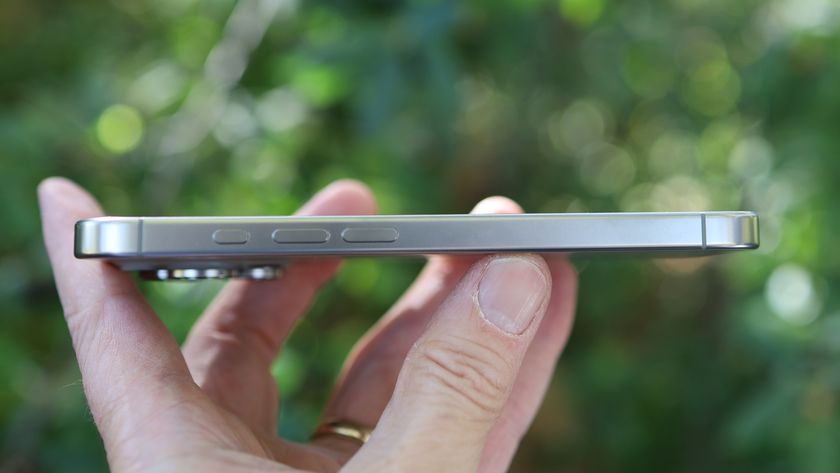AMD's Richard Huddy on the state of PC graphics, Mantle 2 and APUs
We need Mantle 1.0 out first

Richard Huddy is just over one month into the job, and already he's making waves.
AMD's new Gaming Scientist didn't mince words when talking about Nvidia GameWorks and accusations that it not only harms AMD but the quality of the experience for gamers. The first part of our interview, published July 1, had Huddy naming names and pulling no punches.
But aside from poking the hornet's nest, Huddy's job has him talking directly to game developers and relaying their needs to AMD's graphics decision makers. He's in the office of the CTO, giving him powerful ears to bend.
As you can imagine, Huddy has plenty to say on topics like the state of PC graphics and 4K gaming. Of course, there was more on AMD's low-level API Mantle, but this time Huddy got to talking about Mantle 2 and beyond.
TechRadar: AMD has been placing an emphasis on gaming for awhile now. It even has the tagline, 'Radeon is gaming.' But with you back in the brass, you're saying the emphasis is more formalized than before?
Richard Huddy: This representation in the office of the CTO is something that I described as a formalization of the process. It is. When I was previously at AMD, I ran the engineering group that supports games developers throughout the world. And that's a pretty great position to be in if, like me, you like gaming, but in a rather informal, ad hoc kind of way I used to gather up the information that we got from our conversations with ISVs and then funnel it into the architecture group. Now it's highly formalized and very clear.
TR: Will your role cover only PC, or will it include consoles, namely the Xbox One and PS4?
Get daily insight, inspiration and deals in your inbox
Sign up for breaking news, reviews, opinion, top tech deals, and more.
RH: It will expand to all gaming as soon as I have a better understanding of what's required for future consoles, future platforms and so on. But in the first six months or so, I expect to get my teeth into PC gaming and primarily discrete graphics. Sort of high-end graphics rather than the APUs that we also sell, which have very respectable gaming engines inside them these days. But if we're looking at the future, then we're typically thinking about more high-power solutions.
TR: What's your take on the current PC graphics landscape?
RH: It's in a pretty healthy state of affairs, and actually much more healthy than one might have predicted a handful of years ago. Tim Sweeney back in 1998 or 1999 actually predicted the death of 3D graphics within five years. He was out by a couple of years at least, wasn't he?
PC gaming is in a tremendously healthy state. It's a growing business. The turbulence in the PC business as a whole is more about commercial and enterprise PCs rather than gaming. Particularly the discrete business is in a very healthy state. We have presently the fastest graphics card on the planet. You can buy a [Radeon R9] 295X2 from us and we sell that for about $1,500 [about £877, AU$1,591] dollars. That's a lot of money to ask for a graphics card, and I don't remember us ever having a graphics card over $1,000 [about £584, AU$1,060] before.
In the consumer space I don't remember us going in this kind of price range, and we have been very aggressive with what we've been able to do with this card to make it so super fast. It's water cooled for example, which is a bit of surprise. It's a staggering commitment to delivering to the very best.

I look at couple of other metrics for PC gaming. The PC market probably peaked four years ago, five years ago at 330 million units per year. Now it's 270 million, 280 million, so you may think things are in trouble. [But] the gaming business on PC is growing by about a billion dollars a year. It's still very healthy. Probably my favorite number in all of this, the most popular PC game, League of Legends, has 130 million subscriptions. One hundred and thirty million! That's almost the total number of PS3s and Xbox 360s added together.
On top of that, if you're looking forwards, you have a couple of things which are coming up. One of the big ones is 4K gaming, the monitors which we've managed to persuade people to move to because they give a richer experience. People are typically running in 1920 x 1080 resolutions there. A 4K monitor doubles that in X and in Y.
From a GPU manufacturers point of view, that's great, that gives us 4 times as many pixels to work on, but from a gaming point of view ... you just need to wait for a little bit of time to pass so we can build chips which are 50 times more powerful every year. From a gaming perspective, it's a considerable enrichment. So there is no problem with the health of PC gaming. We know we've got a good few years of the current technology still lapping up the horsepower that we give it.
TR: It doesn't seem like the 'mobile gaming is killing PC gaming' doom-and-gloom talk is as heavy as it was a year or so ago.
RH: We've learned that these things co-exist. We tend to think that when a new technology comes along it must be displacing something else and ruining the market for that. The PC has been disrupted. It's probably more that the PC, the replacement cycle has gone a little bit longer rather than people don't own PCs or don't want PCs. I have a smartphone, I have a console, I have a PC and I upgrade each of them when the time comes.
TR: So is 4K gaming on the rise?
RH: Sales are quite small at the moment, but they absolutely will grow I think pretty quickly. In two and a half years, I would guess that it will be pretty thoroughly mainstream. At the moment, I think you'll pay a minimum $600 - $650 [about £350, AU$636 - £379, AU$689] for a 4K monitor, which is a really huge improvement from what you saw a year ago. If you saw the same kind of price decay in two years' time, the price premium over a 1080p monitor might be a hundred bucks or something like that.
The quality improvement is quite substantial. We sometimes say well it's four times as much quality because it's four times as much pixels, isn't it? Life isn't quite as linear at that but it is at least fair to say that you got a substantial improvement in quality and spending the extra money on that makes perfectly good sense.
Michelle was previously a news editor at TechRadar, leading consumer tech news and reviews. Michelle is now a Content Strategist at Facebook. A versatile, highly effective content writer and skilled editor with a keen eye for detail, Michelle is a collaborative problem solver and covered everything from smartwatches and microprocessors to VR and self-driving cars.
















